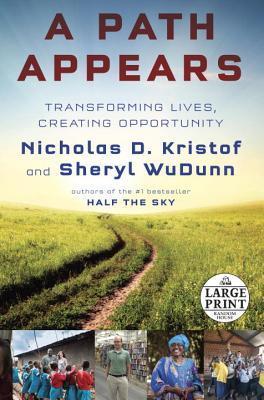What do you think?
Rate this book


656 pages, Paperback
First published September 23, 2014



Hope is like a path in the countryside. Originally, there is nothing--but as people walk this way again and again, a path appears.This book is suggesting that if we try, a path will appear toward ending poverty. The book explains that there is cause for hope based on past progress even though many of us may feel overwhelmed by the magnitude of the problem.
Crippling diseases such as leprosy, guinea worm, and polio are on their way out, and in the next twenty or thirty years malaria and AIDS are also likely to be eliminated as public health threats (although cases will still be reported here and there). The number of children dying before the age of five has almost halved since 1990, even though the number of children has risen. As recently as 1980, half the population of the developing world lived in extreme poverty, defined by the World Bank as less than $1.25 per person per day in today's money. That share is now down to 20 percent, and the World Bank aims to lower it to near zero by 2030. At that time, just about every boy and girl around the world will go to primary school and learn to read. For all of human history until about 1950, a majority of human adults were illiterate; in one lifetime the adult illiteracy rate worldwide has dropped to about 16 percent. On our watch in the next few decades, we have a chance to eliminate the conditions--illiteracy, famine, parasitic disease, and the most abject poverty--that have shaped the majority of human existence since our ancestors began to walk upright.The following are some excerpts from the book that caught my eye. They are NOT the most important things in the book. They’re just little snippets that brought a smile to my face.
One Father’s Day, our teenage kids banded together and gave Nic the perfect gift for any dad--a rat. It was an African giant pouched rat, to be precise, and it has a wondrous sense of smell that allows it to do heroic work detecting landmines. Our kids sponsored one rat's training in Nick's name. The breed is thirty inches long including the tail, with poor eyesight but a superb sense of smell. A Belgian aid group called Apopo figured out how to train these animals to do this lifesaving work. The rats are too light to set off the mines, and they are easily trainable. With a life span of eight years, the rats have plenty of time to earn back the training costs. In a single day, one of these rats--dubbed HeroRats--can clear 400 square meters of land otherwise unusable because of landmines. The HeroRats are deployed to clear mines in Mozambique and Angola, and in twenty minutes they can help clear as much land as human could in two days.The following story is in this book but is credited to the crowd-sourced book Random Acts of Kindness Then and Now. I think it is an illustration as to why poor people give away a larger proportion of their incomes than rich people:
A friend who was working in the Dominican Republic with Habitat for Humanity had befriended a small boy named Etin. He noticed that when Etin wore a shirt at all, it was always the same dirty, tattered one. A box of used clothes had been left at the camp, and my friend found two shirts in it that were in reasonably good shape and about Etin’s size, so he gave them to the grateful boy. A few days later he saw another boy wearing one of the shirts. When he next met up with Etin he explained that the shirts were meant for him. Etin just looked at him and said, “But you gave me two!”At the end of the book there’s a two paged “Gift List” of suggested charitable presents that can be given in someone’s name that may have a truly transformative impact. There is also a ten paged list of “Useful Organizations” at the end of the book, but the authors make no claim to have screened the list for charitable effectiveness. They suggest checking with Charity Navigator, CharityWatch, Philanthropedia, or the Better Business Bureau’s Wise Giving Alliance for evaluations. The audio book does not contain these lists found at the end of printed book.